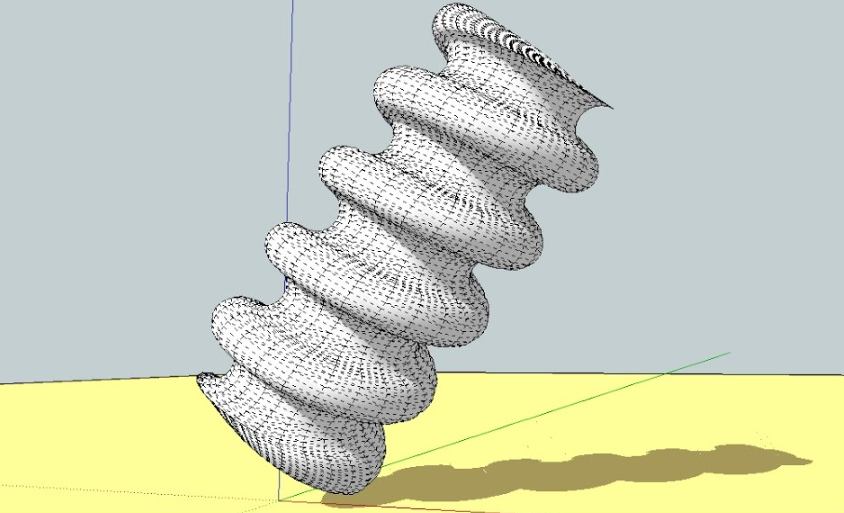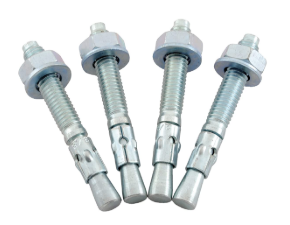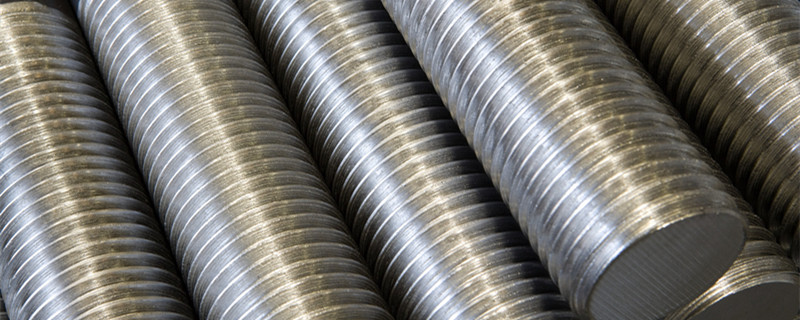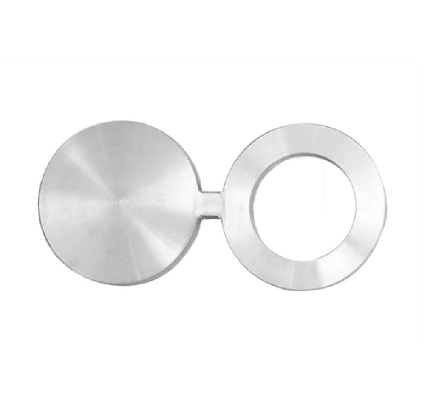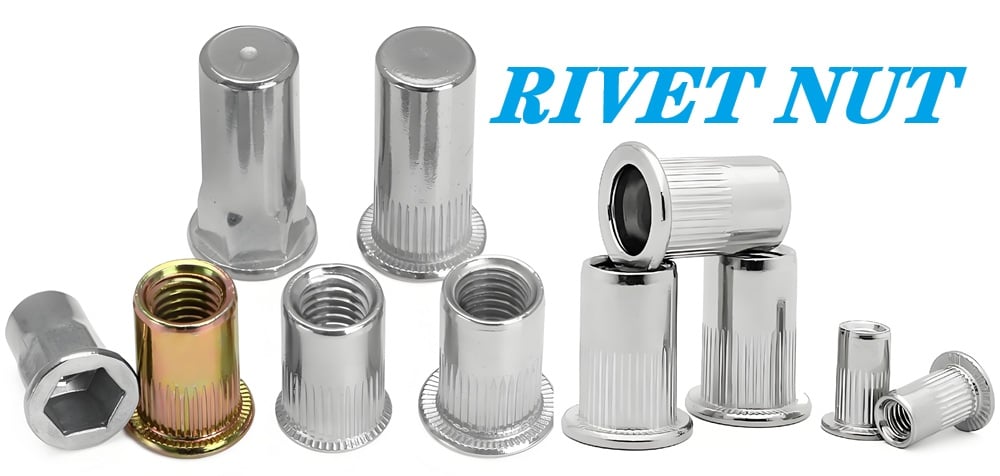Carriage bolts are a common fastener in woodworking and construction. Their unique design and installation advantages make them a practical choice for many projects. This article covers the Carriage bolt definition, available dimensions, grades, mechanical properties, recommended torque, typical uses, and how they compare to lag bolts.
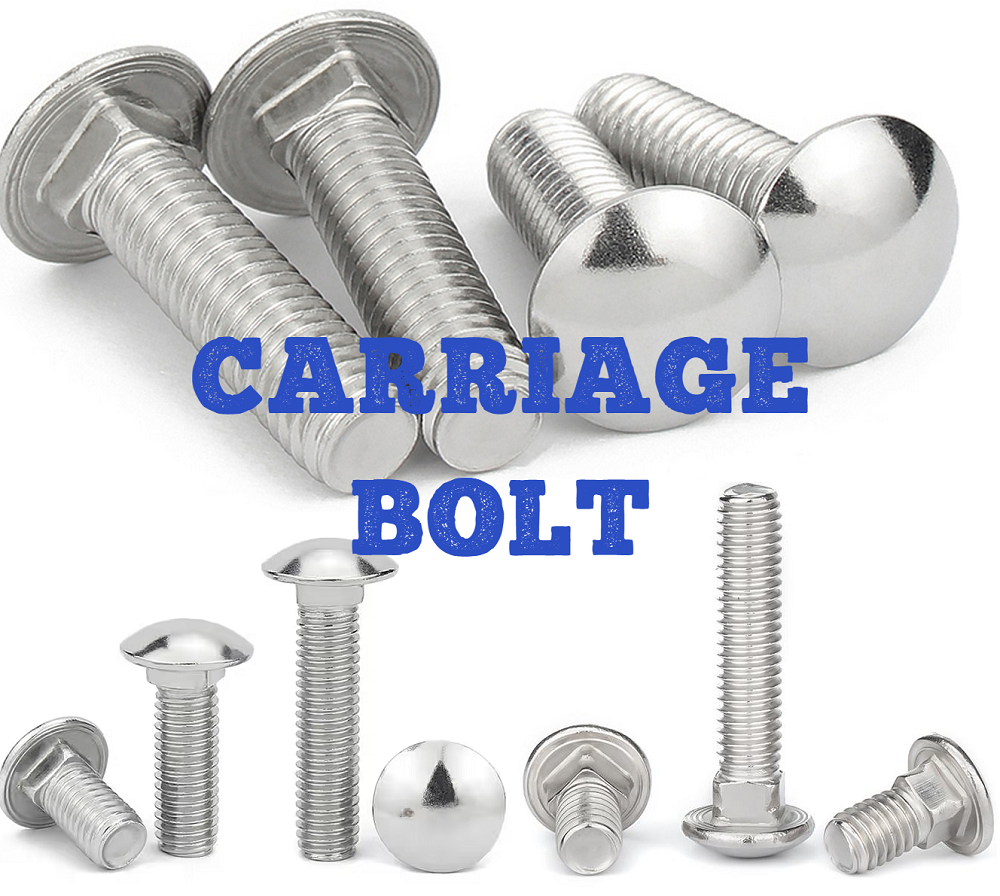
What is a Carriage Bolt?
A carriage bolt is a type of fastener commonly used in woodworking and construction projects. It features a smooth, rounded head and a flat underside, with a square neck just beneath the head. This unique design allows the bolt to be inserted through wood and prevents it from spinning as a nut is tightened on the opposite side.
The rounded top of a carriage bolt makes it less abrasive to materials like plastic, which is helpful when covering a surface that needs to remain smooth. The square section under the head bites into the wood, holding the bolt in place and stopping it from turning when tightening or loosening the nut.
Why is it called a Carriage Bolt?
Carriage bolts get their name from their use on the frames of carriages. The wood frames were punched with square holes, which are compatible with the square shaped neck of carriage bolts. Although they are still known as carriage bolts, they’re used in various applications that require the fastening of wood to metal!
Carriage Bolt Structure
- Head: Typically, carriage bolts have a round head, although flat head styles exist. The round head provides a smooth, low-profile finish and prevents the bolt from being easily gripped and turned from above.
- Neck: Just under the head is a square or ribbed neck (depending on the design). This section plays a crucial role in installation, as it fits into a pre-drilled square hole or bites into the wood or metal to prevent the bolt from spinning as the nut is tightened.
- Shank and Threads: The shank below the neck is partially or fully threaded, depending on the bolt length and application. Unified thread pitch is most common, and the minimal thread length is typically twice the bolt diameter plus an additional fraction based on the bolt length.
- Materials and Finishes: Carriage bolts are available in various materials, including low or medium carbon steel, stainless steel (such as 18-8. 304), and are often zinc-plated, galvanized, or made from alloy steel for higher grades.
Carriage Bolt Purpose – What are Carriage Bolts Used For?
Carriage bolts are especially useful when fastening wood to metal frames or joining two pieces of wood together. They are often chosen for projects where the bolt head will be covered or where access to the head is limited. For example, when building a hoop house, carriage bolts can be used to attach wood to a metal frame, and their smooth heads help prevent damage to any plastic covering.
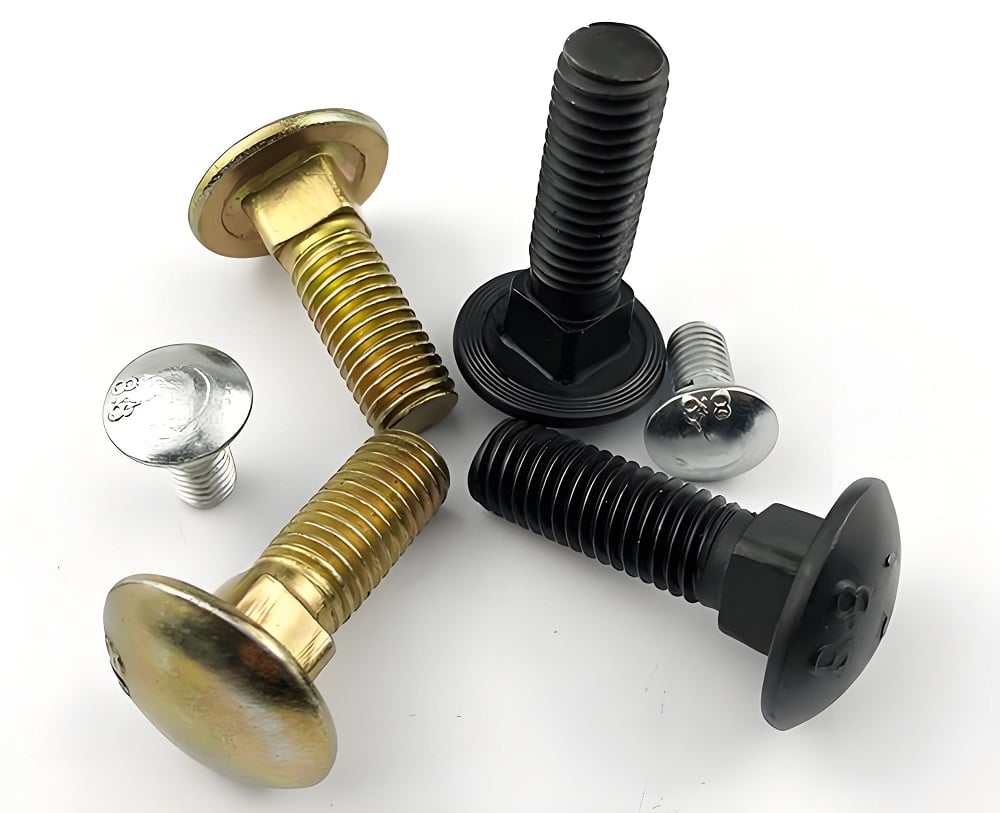
The square neck under the head of the carriage bolt is designed to fit snugly into a pre-drilled hole in the wood. When the nut is tightened, the square neck pulls into the wood, creating an indentation and locking the bolt in place. This design allows for secure fastening without the need to hold the bolt head with a wrench or socket, since the smooth, rounded top cannot be gripped.
Carriage bolts work well with quality plywoods such as Baltic birch or maple, and even softwoods like pine in many situations. However, materials like MDF are not recommended, as they may not hold the square neck securely enough.
Carriage Bolt Applications – Where to Use Carriage Bolts?
Carriage bolts are ideal for situations where you cannot reach the head of the bolt, such as overhead installations or places where the head will be covered. They are also favored for applications involving clamps or knobs, where the bolt needs to stay put as the clamp or knob is tightened. So carriage bolts may not always be in the spotlight, but they are essential components in countless structures and products found in daily life.
Wood Construction and Outdoor Projects
Carriage bolts are commonly used in wooden structures such as decks, fences, playground equipment, and garden furniture. Their smooth, dome-shaped head prevents snagging and reduces the risk of injury, while the square neck locks the bolt in place and prevents rotation during installation. This feature is particularly useful in applications where only one side of the fastener is accessible.
Machinery and Equipment Assembly
In the world of machinery and equipment, carriage bolts provide reliable fastening for frames, panels, and components. Their ability to create secure, vibration-resistant connections makes them suitable for use in agricultural machinery, conveyor systems, and industrial equipment.
Metal Framing and Fabrication
Carriage bolts are also employed in metal framing and fabrication, especially when attaching wood panels to metal supports or joining metal components that require a lower profile, rounded head. The square neck ensures the bolt remains stationary as the nut is tightened from the opposite side.
Furniture and Cabinetry
Because of their clean, finished appearance, carriage bolts are often used in assembling furniture, cabinetry, and workbenches. The smooth head can be left exposed or recessed into the surface for a flush finish, contributing both to the function and aesthetics of the piece.
Public Infrastructure and Safety Applications
In public spaces, carriage bolts are frequently found in park benches, playgrounds, and handrails. The tamper-resistant head and robust design make them a reliable choice for installations where safety and durability are priorities.
Temporary and Permanent Joints
Carriage bolts are suitable for both temporary and permanent joints. They are easy to install and remove, allowing for maintenance or replacement when necessary. This flexibility is valuable in construction, where adjustments or disassembly may be required.
Carriage Bolt Installation – How to Use Carriage Bolts?
To install a carriage bolt, start by drilling a hole through the wood that matches the diameter of the bolt. For example, if you are using a 1/2-inch carriage bolt, drill a 1/2-inch hole. The hole needs to be just large enough for the threads to pass through, so the square neck can press into the wood and stop the bolt from spinning.
If you want the bolt head to sit below the surface of the wood, you can create a counterbored hole using a Forstner bit. This flat-bottomed hole allows the head to be recessed, making for a flush finish.
Once the hole is drilled, insert the carriage bolt and tap it gently with a hammer to seat the square neck into the wood. Place a washer and a nut on the opposite side, then tighten the nut. As you do this, the head will be pulled into the wood, holding everything securely in place. The bolt should not spin as you tighten or remove the nut, thanks to the square neck’s grip in the wood.
Carriage bolts are available in various lengths, usually in half-inch increments, so you can choose the right size for your project. If a longer bolt is used, any excess can be cut off after installation.
Carriage Bolt Grades
Bolts come in a range of grades, classes, and strength ratings. The grade of a bolt reflects its material composition, strength, and hardness. Carriage bolts are also available in several of these grades in the market, which influence their suitable applications and overall performance.
Grade 1 (307A) Carriage Bolts
At the lower end of the spectrum is the grade 1. also known as 307A. These are made from low to medium carbon steel and are quite soft, with hardness measured in the Rockwell B scale. Their proof to tensile strength is between 33.000 and 60.000 psi. The only thing guaranteed about these bolts is that a magnet will stick to them and they will sink if dropped in water. These are at the bottom of the barrel for bolt grades, costing about a dollar each for a six-inch, half-inch thread bolt. The recommended tightening for this size with dry threads is 32 foot-pounds. Under load, they can handle up to about 84 foot-pounds before failing, which is a result of thread rollover due to the softer material.
Grade 2 Carriage Bolts
Grade 2 bolts are equivalent to metric class 5.8 or lower. These are some of the more common, inexpensive bolts you might find at a hardware store, often without markings on the head. They typically have a shiny white zinc coating, but can be sold in various finishes. Grade 2 bolts are stronger than grade 1. but still considered on the lower end for strength applications.
Grade 5 (Class 8.8 Metric) Carriage Bolts
Grade 5. or metric class 8.8. bolts are the most common type found on vehicles and are made from medium carbon steel, sometimes treated for additional strength. These bolts have three lines on the head or a marking of 8.8 for metric threads. Their psi strength ratings are about twice that of grade 1 bolts. For a half-inch, 13-thread bolt, the recommended tightening is 75 foot-pounds. These bolts can handle up to 165 foot-pounds before yielding, and their hardness starts in the Rockwell C scale (typically 25-34 HRC).
Grade 8 (Class 10.9 Metric) Carriage Bolts
Grade 8 bolts, similar to metric class 10.9. are a popular choice for high-strength applications. These bolts are made from medium carbon steel or alloy steel and reach a tensile strength of 150.000 psi. They usually have six line markings on the head or a 10.9 for metric bolts, and often come in a yellow zinc finish. The recommended torque for a half-inch, 13-thread bolt is 106 foot-pounds, and they can withstand up to 213 foot-pounds before failure. Their hardness ranges from 33 to 39 HRC.
Class 12.9 and Grade 9 Carriage Bolts
Class 12.9 bolts (and their SAE equivalent, grade 9) are among the highest strength fasteners commonly used, with ratings from 170.000 to 180.000 psi. These bolts are often socket cap screws rather than hex head bolts and may be stamped with 12.9 or come without markings. The recommended tightening torque is 125 foot-pounds, and they are capable of handling up to 230 foot-pounds in testing. Their hardness typically measures between 39 and 44 HRC.
Bowmalloy Carriage Bolts
Bowmalloy bolts, categorized as grade 9 by some suppliers, are rated for 200.000 psi tensile strength. These are made from through-hardened alloy steel, and larger bolts may have a “B” on the head or a unique insignia on smaller sizes. Bowmalloy bolts are at the top end in terms of strength and hardness, with values around 45 HRC. These bolts can climb up in tension quickly and resist stretching or thread rounding under high impact.
Stainless Steel (18-8. 304) Carriage Bolts
Stainless steel carriage bolts, often classified as 18-8. are typically made from 303 or 304 stainless steel. They are primarily used for corrosion resistance, especially in marine environments. The minimum strength is 65.000 psi, but typical values can range between 100.000 and 150.000 psi, putting them in the range of grade 2 up to over grade 5. These bolts are more expensive than grade 8 bolts but may not always match their strength. Their hardness is usually on the lower end, often below the measurable range of the Rockwell C scale.
Carriage Bolt Grade Chart (Material, Tensile Strength, Hardness, Uses)
Here we’ve sorted out a table to breifly present the carriage bolt grades, each suited to specific requirements for strength, hardness, corrosion resistance, and cost.
| Grade/Class | Typical Material | Tensile Strength (psi) | Hardness (HRC) | Markings/Finish | Typical Application |
|---|---|---|---|---|---|
| Grade 1 (307A) | Low/Med Carbon Steel | 33,000–60,000 | B Scale | Unmarked | Light-duty, non-structural |
| Grade 2 | Low Carbon Steel | ~74,000 | B Scale | Unmarked | General purpose, hardware |
| Grade 5 (8.8) | Med Carbon Steel | 120,000 | 25–34 | 3 lines/8.8, zinc | Automotive, machinery |
| Grade 8 (10.9) | Alloy/Med Carbon Steel | 150,000 | 33–39 | 6 lines/10.9, yellow | Structural, high strength |
| Grade 9 (12.9) | Alloy Steel | 170,000–180,000 | 39–44 | 12.9, socket cap | Heavy machinery, industrial |
| Bowmalloy | Alloy Steel | 200,000 | ~45 | B/Insignia | Extreme load, specialty |
| Stainless 18-8 | 304 Stainless | 65,000–150,000 | B Scale | None, shiny | Marine, corrosion resistance |
Carriage Bolt Types
Like other bolt fasteners, carriage bolts come in different grades, with different heads, necks, and threads designed to meet different needs. The following are the most common types of carriage bolts currently on the market:
- Round Head Square Neck Carriage Bolt: The standard design, used in wood or metal.
- Short Neck Carriage Bolt: Designed for use in sheet metal where a standard neck would create an obstruction.
- Ribbed Neck Carriage Bolt: Features ribs instead of a square to resist turning in softer materials like wood or plastic.
- Fin Neck Carriage Bolt: Used in thin plywood, with two fins instead of a square or ribbed neck.
- Flat Head Square Neck Carriage Bolt: Offers a lower profile due to its flat head, commonly used in applications where a flush finish is needed.
- Knurled Carriage Bolt: Features a round head and a neck with knurled (grooved or ridged) patterns beneath the head, designed to prevent rotation when installed in wood, metal, or plastic.
Carriage Bolt Dimensions
The following sizes are involved for a standard carriage bolt’s measurement:
- Body Diameter/Thread Size: The width of threaded portion (outside thread diameter x thread pitch/TPI)
- Length: The length from the underside of the head to the end of the threaded portion.
- Head Diameter: Width of the round head.
- Head Height: Height from the base of the head to the top.
- Square Width: Width across the square neck.
- Square Depth: Height of the square neck below the head.
- Thread Length: The length of the threaded portion.

How are Carriage Bolts Measured?
When taking carriage bolt measurements the diameter and length are the main factors, they are taken in the same manner as other types of bolts and threaded fasteners. The length is taken directly from the base of the head of the bolt to the end of the threaded portion, the bolt’s diameter is the measurement of the width of the threaded portion.
So you can see the dimensions of carriage bolts are the key to selection for your project. Below we present the standard carriage bolt size charts for readers’ reference.
Metric Carriage Bolt Size Chart in MM
Dimensions in millimeters (mm). Reference: ISO 8677; DIN 603; JIS B 1171 standards.
| Nominal Diameter (mm) | Pitch (mm) | Square Width Across Flat | Square Width Across Corners (Min) | Square Depth | Head Diameter | Head Height | Thread Length | ||||||
|---|---|---|---|---|---|---|---|---|---|---|---|---|---|
| Max | Min | Min | Max | Min | Max | Min | Max | ≤125 | >125 & ≤200 | >200 | |||
| M5 | 0.8 | 5.48 | 4.52 | 5.9 | 4.1 | 2.9 | 13 | 11.7 | 3.1 | 2.5 | 16 | 20 | – |
| M6 | 1 | 6.48 | 5.52 | 7.2 | 5.2 | 3.4 | 16 | 14.9 | 3.6 | 2.8 | 18 | 24 | – |
| M8 | 1.25 | 8.58 | 7.42 | 9.6 | 6.6 | 4.4 | 20 | 18.7 | 4.8 | 4.2 | 22 | 28 | 41 |
| M10 | 1.5 | 10.58 | 9.42 | 12.2 | 8.6 | 5.4 | 24 | 22.7 | 5.8 | 5 | 26 | 32 | 45 |
| M12 | 1.75 | 12.7 | 11.3 | 14.7 | 10.8 | 6.6 | 30 | 28.7 | 7.6 | 6.2 | 36 | 38 | 57 |
| M16 | 2 | 16.7 | 15.3 | 19.9 | 11.1 | 8.8 | 38 | 36.7 | 9.4 | 8.2 | 38 | 44 | 57 |
| M20 | 2.5 | 20.84 | 19.16 | 24.9 | 15.9 | 14.1 | 46 | 44.4 | 10.9 | 10 | 52 | 65 | 65 |
20-33mm: ±1.05 | 35-50mm: ±1.25 | 55-80mm: ±1.5 | 90-120mm: ±1.75 | 130-150mm: ±2.0 | 160-180mm: ±4.0 | 200mm: ±4.6
Imperial Carriage Bolt Size Chart in Inches
All dimensions are in inches. Dimensions per ASME B18.5 1990 (R 1998) cover diameters up to 1″. Bolts over 1″ use custom head dimensions.
| Bolt Diameter | Body Diameter | Head Diameter | Head Height | Square Width | Square Depth | |||||
|---|---|---|---|---|---|---|---|---|---|---|
| Max | Min | Max | Min | Max | Min | Max | Min | Max | Min | |
| #10 | 0.199 | 0.159 | 0.469 | 0.436 | 0.114 | 0.094 | 0.199 | 0.185 | 0.125 | 0.094 |
| 1/4 | 0.26 | 0.213 | 0.594 | 0.563 | 0.145 | 0.125 | 0.265 | 0.245 | 0.156 | 0.125 |
| 5/16 | 0.324 | 0.272 | 0.719 | 0.688 | 0.176 | 0.156 | 0.324 | 0.307 | 0.187 | 0.156 |
| 3/8 | 0.388 | 0.329 | 0.844 | 0.807 | 0.208 | 0.188 | 0.389 | 0.369 | 0.219 | 0.188 |
| 7/16 | 0.452 | 0.385 | 0.969 | 0.907 | 0.239 | 0.219 | 0.452 | 0.432 | 0.25 | 0.219 |
| 1/2 | 0.515 | 0.444 | 1.094 | 1.031 | 0.270 | 0.250 | 0.515 | 0.492 | 0.281 | 0.250 |
| 5/8 | 0.642 | 0.559 | 1.344 | 1.281 | 0.344 | 0.313 | 0.642 | 0.616 | 0.344 | 0.313 |
| 3/4 | 0.768 | 0.679 | 1.594 | 1.531 | 0.406 | 0.375 | 0.768 | 0.741 | 0.406 | 0.375 |
| 7/8 | 0.895 | 0.795 | 1.844 | 1.781 | 0.469 | 0.438 | 0.895 | 0.865 | 0.469 | 0.438 |
| 1 | 1.022 | 0.91 | 2.094 | 2.031 | 0.531 | 0.500 | 1.022 | 0.990 | 0.531 | 0.500 |
Carriage Bolt Shear Strength Chart
A carriage bolt’s grade material and diameter are key factors in determining the bolt’s shear strength tensile strength and weight capacity. Using grade 8 carriage bolts made from alloy steel as an example, these bolts will provide 90,000 psi shear strength and 150,000 psi tensile strength, these varied limitations are an important factor when identifying the most appropriate type of carriage bolt for an application.
- Shear Strength Calculation:
Shear Strength (lbs) = Shear Strength (psi) × Area (in²) - Shear Strength Values (psi) by Grade/Material:
- Grade 2 (Low Carbon Steel): ~37,500 psi
- Grade 5 (Medium Carbon Steel): ~54,000 psi
- Grade 8 (Alloy Steel): ~90,000 psi
- Stainless Steel 18-8 (A2): ~45,000 psi
- Stainless Steel 316 (A4): ~45,000 psi
Note: These are approximate minimum values. Always consult manufacturer data for critical applications.
Carriage Bolt Cross-Sectional Areas
| Diameter (in) | Area (in²) |
|---|---|
| 1/4″ | 0.0491 |
| 5/16″ | 0.0767 |
| 3/8″ | 0.1104 |
| 7/16″ | 0.1500 |
| 1/2″ | 0.1963 |
| 9/16″ | 0.2485 |
| 5/8″ | 0.3068 |
| 3/4″ | 0.4418 |
| 7/8″ | 0.6013 |
| 1″ | 0.7854 |
Carriage Bolt Shear Strength Chart
| Size | Area | Grade 2 | Grade 5 | Grade 8 | Stainless 18-8 | Stainless 316 |
|---|---|---|---|---|---|---|
| 1/4″ | 0.0491 | 1,841 lbs | 4,142 lbs | 4,419 lbs | 2,209 lbs | 2,209 lbs |
| 5/16″ | 0.0767 | 2,876 lbs | 4,142 lbs | 6,903 lbs | 3,452 lbs | 3,452 lbs |
| 3/8″ | 0.1104 | 4,140 lbs | 5,962 lbs | 9,936 lbs | 4,968 lbs | 4,968 lbs |
| 7/16″ | 0.1500 | 5,625 lbs | 8,100 lbs | 13,500 lbs | 6,750 lbs | 6,750 lbs |
| 1/2″ | 0.1963 | 7,361 lbs | 10,600 lbs | 17,667 lbs | 8,834 lbs | 8,834 lbs |
| 9/16″ | 0.2485 | 9,319 lbs | 13,439 lbs | 22,365 lbs | 11,183 lbs | 11,183 lbs |
| 5/8″ | 0.3068 | 11,530 lbs | 16,567 lbs | 27,612 lbs | 13,806 lbs | 13,806 lbs |
| 3/4″ | 0.4418 | 16,568 lbs | 23,857 lbs | 39,762 lbs | 19,881 lbs | 19,881 lbs |
| 7/8″ | 0.6013 | 22,549 lbs | 32,470 lbs | 54,117 lbs | 27,059 lbs | 27,059 lbs |
| 1″ | 0.7854 | 29,453 lbs | 42,412 lbs | 70,686 lbs | 35,343 lbs | 35,343 lbs |
How To Use This Chart:
- Find your bolt diameter and material/grade.
- Read across for the approximate single shear strength (lbs).
- For double shear, multiply by 2.
- For critical safety applications, always use a safety factor and consult manufacturer data.
Carriage Bolt Torque Chart
Here is a Carriage Bolt Torque Chart based on standard engineering practices and the mechanical properties. These values are common reference torques for carbon steel, Grade 5. Grade 8. and 18-8 stainless steel carriage bolts with zinc-plated threads lubricated.
Metric Carriage Bolt Torque Chart
| Bolt Size | Class 4.6 | Class 8.8 | A2/A4 Stainless |
|---|---|---|---|
| M5 | 4 Nm (3 ft-lb) | 7 Nm (5 ft-lb) | 4 Nm (3 ft-lb) |
| M6 | 7 Nm (5 ft-lb) | 11 Nm (8 ft-lb) | 7 Nm (5 ft-lb) |
| M8 | 17 Nm (13 ft-lb) | 28 Nm (21 ft-lb) | 17 Nm (13 ft-lb) |
| M10 | 34 Nm (25 ft-lb) | 55 Nm (41 ft-lb) | 34 Nm (25 ft-lb) |
| M12 | 59 Nm (44 ft-lb) | 97 Nm (72 ft-lb) | 59 Nm (44 ft-lb) |
| M16 | 146 Nm (108 ft-lb) | 240 Nm (177 ft-lb) | 146 Nm (108 ft-lb) |
| M20 | 285 Nm (210 ft-lb) | 470 Nm (347 ft-lb) | 285 Nm (210 ft-lb) |
Carriage Bolt Torque Chart (Imperial/SAE)
| Bolt Size | Low Carbon Steel (Grade 2)* | Grade 5 | Grade 8 | 18-8 Stainless Steel |
|---|---|---|---|---|
| 1/4″-20 | 6 ft-lb (8 Nm) | 9 ft-lb | 12 ft-lb | 6 ft-lb |
| 5/16″-18 | 13 ft-lb (18 Nm) | 18 ft-lb | 25 ft-lb | 13 ft-lb |
| 3/8″-16 | 23 ft-lb (31 Nm) | 31 ft-lb | 44 ft-lb | 23 ft-lb |
| 7/16″-14 | 37 ft-lb (50 Nm) | 49 ft-lb | 70 ft-lb | 37 ft-lb |
| 1/2″-13 | 57 ft-lb (77 Nm) | 80 ft-lb | 120 ft-lb | 57 ft-lb |
| 5/8″-11 | 112 ft-lb (152 Nm) | 159 ft-lb | 225 ft-lb | 112 ft-lb |
| 3/4″-10 | 200 ft-lb (271 Nm) | 276 ft-lb | 400 ft-lb | 200 ft-lb |
How to Use This Chart
- Values assume lubricated threads. Dry threads may require higher values; consult manufacturer if unsure.
- Select the bolt size and grade that matches your application.
- Apply torque gradually: Use a calibrated torque wrench, and tighten in steps to avoid overtightening.
Note:
Always refer to manufacturer recommendations and consider application-specific factors (lubrication, material, joint type) for precise torque values.
Lag Bolt vs Carriage Bolt: What is the Difference?
What is the difference between a lag bolt and a carriage bolt? Carriage bolts and lag bolts differ in their form, although they are both applied to wood applications. Carriage bolts have a domed head and a consistent cylindrical threaded portion that ends in a flat edge. They have a square neck that prevents them from turning once they’re installed. Lag bolts have a hexagonal head wider threaded portion and pointed head.
More FAQs about Carriage Bolt
How To Install Carriage Bolts?
Carriage bolt installation starts with the bolt being inserted into a pre-drilled hole in a wood work piece, the installation hole should be compatible with the diameter of the bolt the square-shaped neck of a carriage bolt prevents it from shifting, as the nut is placed on the end and tightened which is done with a hand wrench or power tool.
How to Remove Carriage Bolts?
To remove a carriage bolt, first loosen the nut until it is near the end of the bolt but still attached. This allows you to reuse the bolt if needed. Use a hammer to tap the end of the bolt from the opposite side, pushing it back through the hole. If the bolt is stuck, you can use the claw of a hammer to pull it out. The square neck may have left an indentation in the wood, making it easier to reinstall the bolt in the same spot in the future.
Do Carriage Bolts Need Washers?
A washer is not a mandatory part of a carriage bolt assembly, because they have a wider dome shaped head. They will distribute load and are suited for placement in a softer material like wood. The square shaped collar below the bolt head will prevent rotation, thus maintaining the tension of the assembly. A washer can still be added if a material barrier is required.
Do Carriage Bolts Need Washers?
Carriage bolts can be installed without a washer, the dome-shaped round head of a carriage bolt will help to more evenly distribute load across a softer material like wood, the square shape of their collar or neck prevents the assembly from rotating and better secures it in place. If the material buffer is needed between fasteners and the installation, a washer can still be used.
What Are Carriage Bolts Made From?
Carriage bolts are most commonly manufactured from structural grade metals, which are used to make many types of bolts. Standard carriage bolts are made from carbon steel, alloy steel, and stainless steel. There sometimes finished with various treatments to enhance their resistance such as hot dipped galvanized ation and zinc plating.
Are Timber Bolts And Carriage Bolts The Same?
Timber bolts and carriage bolts are similar, but they have distinct features. Carriage bolts are used to fasten wood to metal, they have a square neck that helps to prevent turning after tightening. Timber bolts are used to connect wood to other wood parts, they also will resist turning but this is accomplished with small nubs on the underside of the head which grip the material.


